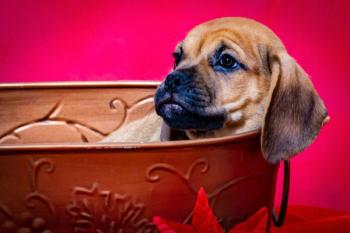
- Vetted February 2019
- Volume 114
- Issue 2
Future trend? Millennials could be the boost pet insurance needs
Increased humanization of pets amongst younger pet owners might lead to more acceptance of pet health insurance.
Generation Y, or millennials, are poised to be the generation that makes pet insurance the norm. As the largest pet-owning demographic, owning 35 percent of all pets in the United States, millennials have surpassed Baby Boomers in recent years, who make up 32 percent of pet ownership.
Generation Y includes those born in the early 1980s through the mid 1990s. And millennials are more likely to spend money on their pets, feeding them organic foods, giving flavored medications, paying for pet services, and entertaining them with pet parties and taking them on holidays, according to the
“Millennials represent the largest pet-owning demographic now and are driving pet spending across most categories,” says Steve Shell, VP of veterinary services and partnerships with pet insurance company PetPlan. “This group is delaying having children, delaying home ownership, but they have the resources to spend. And they are the ones driving the subscription economy for things like BarkBox. Pet insurance fits into that subscription economy and helps them do what it takes to make their four-legged children healthy.”
A look at the numbers
Sixty-eight percent of all U.S. households own at least one pet. The number of pet-owning households is 84.6 million, with 48 percent owning a dog and 38 percent owning a cat. Pet ownership is consistently trending upwards through the last two decades, according to the APPA. Of those, still only 10 percent of dog owners and 5 percent of cat owners have invested in health insurance for their pets. That equates to nearly 9 million insured dogs and more than 4.5 million insured cats. Sounds like a lot, but that number someday could be higher-much, much higher.
“With the humanization of pets becoming more prevalent, this younger generation is the one that could absolutely make pet insurance common,” says Shell, who is also the Veterinary Relations Chair with the North American Pet Health Insurance Association (NAPHIA). “I don't fit the demographic, but even in my own house my kids talk about our dog as their sister. And we've started putting her on our Christmas cards. She has become our child. With millennials, who are travelling more with their pets, seeking out pet-friendly restaurants, even taking pets on dates with them, pet insurance just makes sense.”
The IDEXX study shows that 61 percent of millennials are willing to make trade-offs in their finances to afford care for their pets, versus 57 percent of Gen X and 50 percent of Baby Boomers. Only 13 percent say they wouldn't make any tradeoffs to pay for their pets' needs.
Shell says he hopes the increasing status of pets in the home means veterinarians will be a leading voice in educating clients about the existence of pet insurance.
“You don't have to sell it or negotiate it, just make sure clients know pet insurance exists, especially with new clients or those with puppies and kittens,” Shell says. “Send them to pet insurers, and we'll take care of the rest.”
Sarah A. Moser is a freelance writer in Lenexa, Kansas.
Articles in this issue
almost 7 years ago
Here comes the sun: Are you ready for parasite season?almost 7 years ago
Motherhood and the veterinary profession: a series of hurdlesalmost 7 years ago
Comfort rooms are coolalmost 7 years ago
You're getting this wrong when it comes to parasite preventivesabout 7 years ago
Yoga in the vet clinic: Shoulder blade stretchabout 7 years ago
Fear Free quick tip: Pot holders good for more than just the kitchenNewsletter
From exam room tips to practice management insights, get trusted veterinary news delivered straight to your inbox—subscribe to dvm360.





